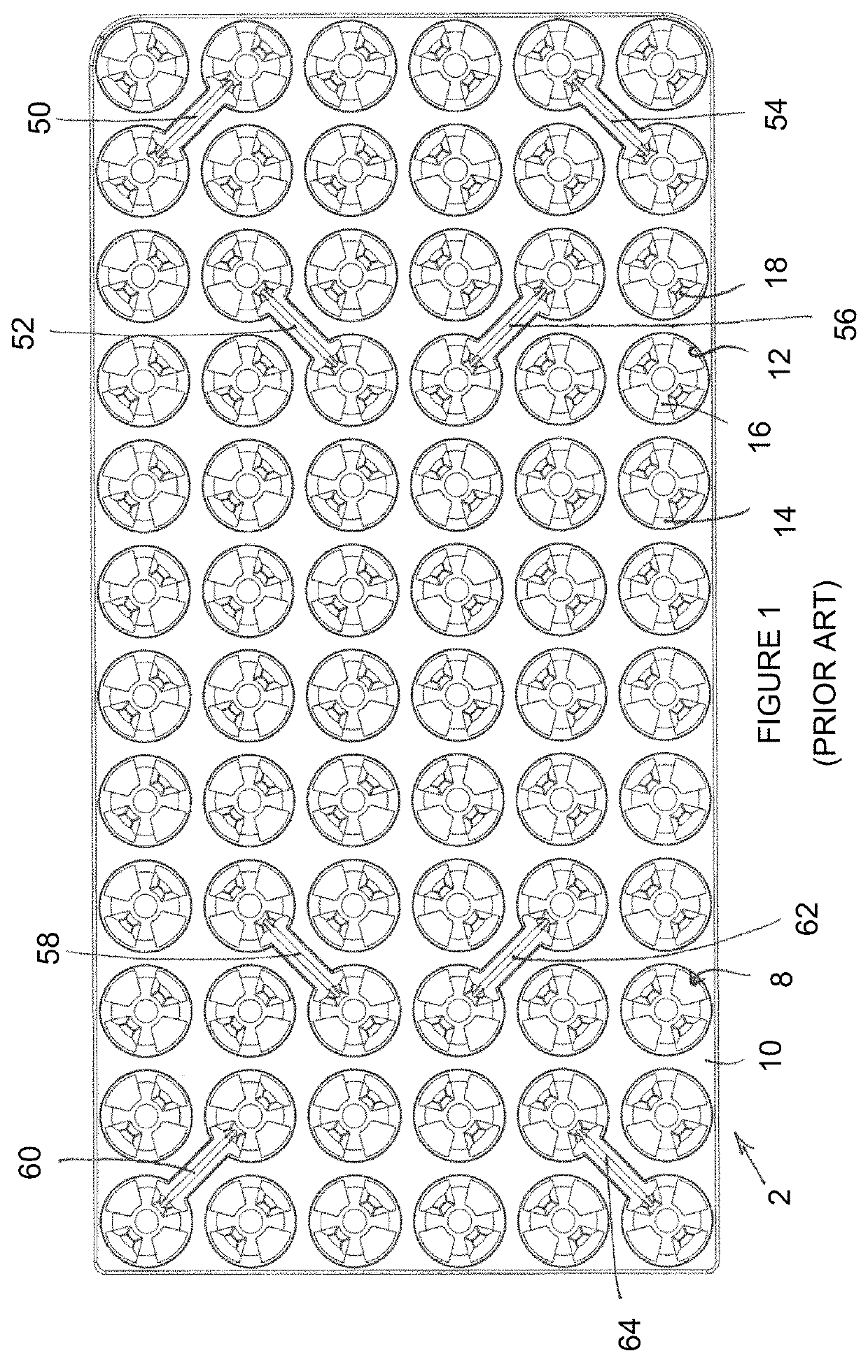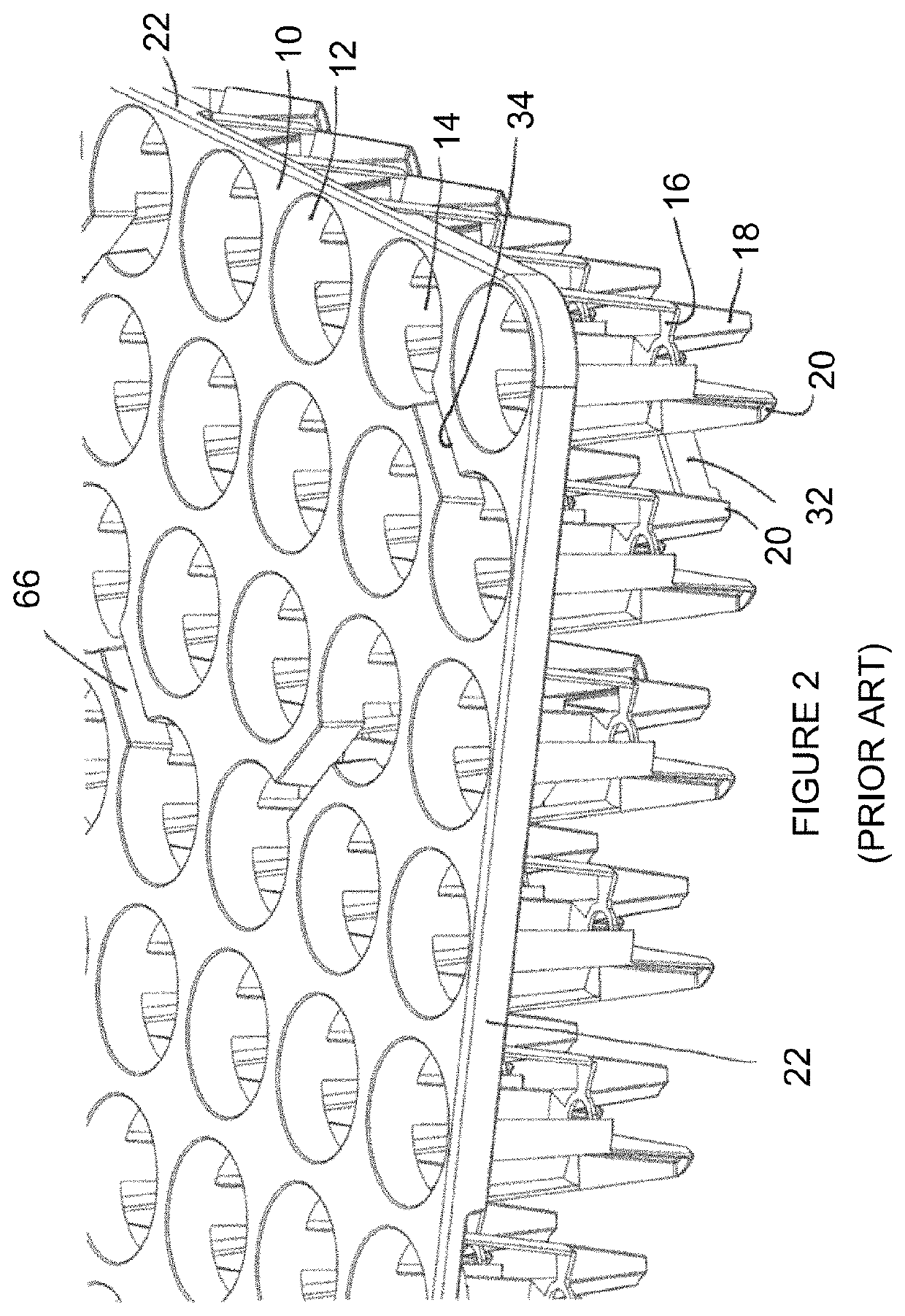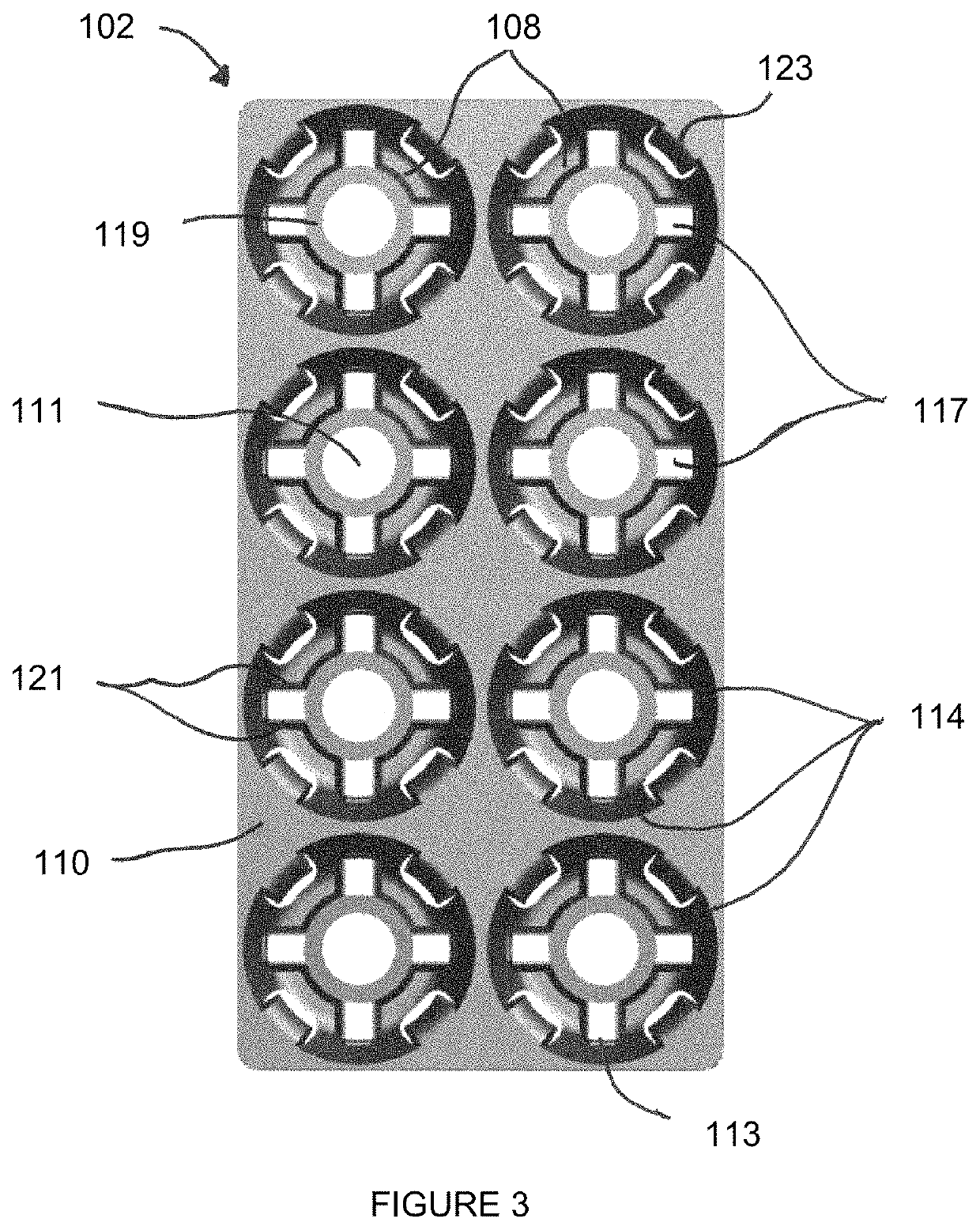Plant-growing tray
a plant tray and growing tray technology, applied in the field of plant tray, can solve the problems of occupying a large space, prone to tipping, and occupying a lot of space, and inserted into the cells in a repeatable, central position in the cell, and avoiding the effect of a repeatable central position
- Summary
- Abstract
- Description
- Claims
- Application Information
AI Technical Summary
Benefits of technology
Problems solved by technology
Method used
Image
Examples
first embodiment
[0100]FIG. 3 is a plan view of a plant tray according to the invention;
[0101]FIG. 4 is a perspective view, from above, of the tray of FIG. 3;
[0102]FIG. 5 is a perspective view of the underside of the plant tray in FIGS. 3 and 4;
second embodiment
[0103]FIG. 6 is a plan view of a plant tray according to the invention;
[0104]FIG. 7 is an enlarged partial plan view of a portion of the plant tray of FIG. 6;
[0105]FIG. 8 is a perspective view, from above, of the portion of the plant tray shown in FIG. 7;
[0106]FIG. 9 is an enlarged partial plan view of the portion of the plant tray shown in FIGS. 7 and 8, containing a stabilised medium;
[0107]FIG. 10 is a perspective view, from above, of the portion of the plant tray shown in FIGS. 7 to 9, containing a stabilised medium;
[0108]FIG. 11 is a vertical cross-section of the portion of the plant tray shown in FIGS. 9 and 10 taken along the line A-A;
[0109]FIG. 12 is a vertical cross-section of the portion of the plant tray shown in FIGS. 9 and 10 taken along the line B-B;
[0110]FIGS. 13A, 13B and 13C illustrate a nestable upper projection according to a preferred embodiment of the present invention.
[0111]FIGS. 1 and 2 illustrate a prior art plant tray 2, as described in WO2010 / 103276. The pri...
PUM
 Login to View More
Login to View More Abstract
Description
Claims
Application Information
 Login to View More
Login to View More - R&D
- Intellectual Property
- Life Sciences
- Materials
- Tech Scout
- Unparalleled Data Quality
- Higher Quality Content
- 60% Fewer Hallucinations
Browse by: Latest US Patents, China's latest patents, Technical Efficacy Thesaurus, Application Domain, Technology Topic, Popular Technical Reports.
© 2025 PatSnap. All rights reserved.Legal|Privacy policy|Modern Slavery Act Transparency Statement|Sitemap|About US| Contact US: help@patsnap.com



